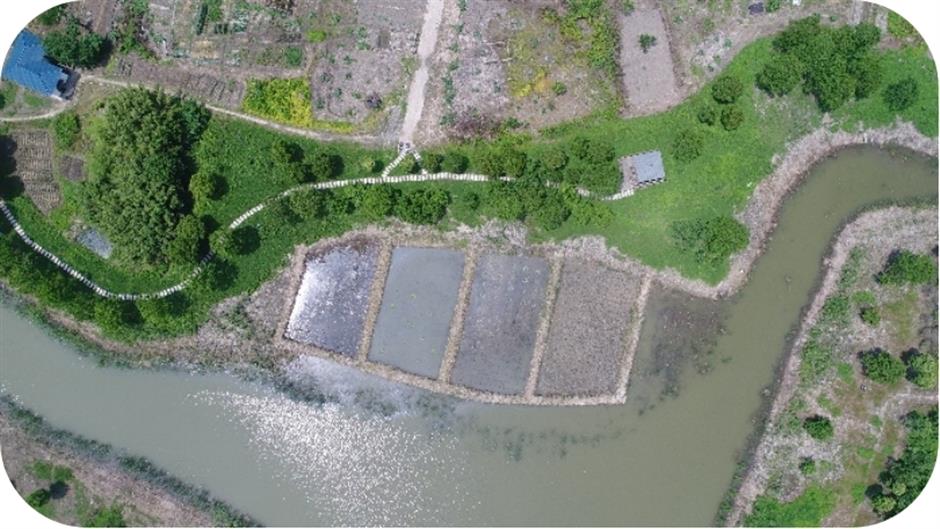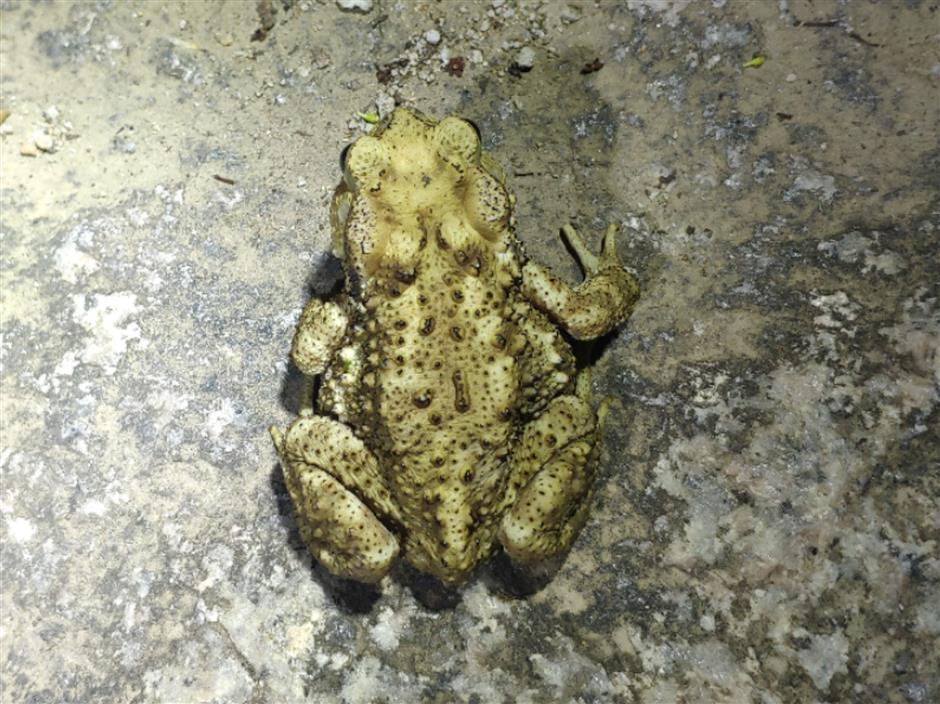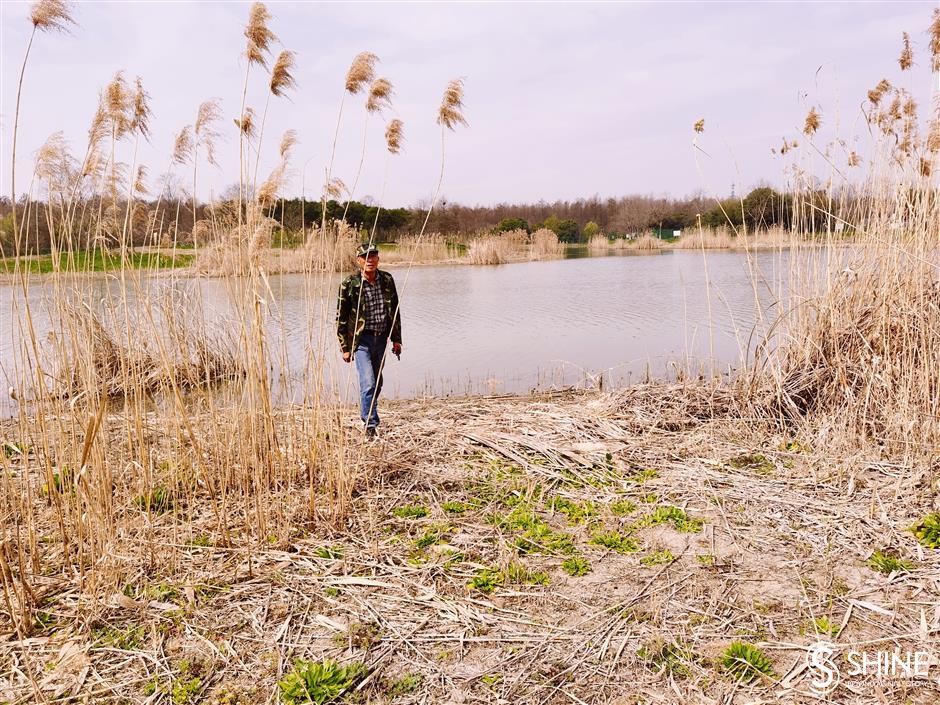今日上海
专门为青蛙创造的人造栖息地 - 2023年03月12日
A man-made habitat created specifically for frogs
A symphony of chirping insects, croaking frogs, and twittering birds is the closest human beings have come to nature, but when was the last time you heard frogs croaking in Shanghai?
Few people are aware of the dangers posed by climate change and urban development. Nevertheless, it appears that croaking frogs have become a childhood memory for many people who live in the concrete jungle.
Frogs are becoming "rare" in Shanghai.
Amphibians are among the most vulnerable species to urban expansion. According to the Shanghai Natural History Museum, about one-third of the world's amphibians are on the verge of extinction, and the numbers of many more are declining.
In the 1980s, Shanghai reported 11 frog species. In the 1990s, the figure fell to eight. Now, it stands at six.
According to the museum, in addition to the number of species, their population has been declining substantially in Shanghai in recent years.
Frogs' croaking can now only be heard in a few suburban parks and wetlands.

Infrared cameras being installed at the habitat in Zhangma Village.
Shanghai has been implementing a program to promote wildlife habitat since 2013. They are home to frogs, birds, river deer, and badgers.
The goal is to improve the city's biodiversity and the harmonious coexistence of humans and nature by rebuilding ecosystems through ecological means.
There is a tract of land with a forest, wetland and pond in Zhangma Village in Qingpu District. It is one of the four wildlife habitats designed in the city exclusively for frogs.
The habitat is about six kilometers from the famous Zhujiajiao Water Town.
It covers 143,533 square meters and includes ponds and a forest of pond cypress. There are coniferous and broad-leaved forests as well.
Originally a farm, it has been transformed into a favorable feeding and nesting environment for frogs. Several frogs were successfully reintroduced.
It has a dense water network and a diverse plant cover.

A bird's eye view of the habitat
Wei Xu, who is part of a research team at East China Normal University that is tracking the growth of the habitat, goes to the site often to set up infrared cameras and collect the data and images that these cameras produce.
Ten infrared cameras have been installed.
"The conditions here are beneficial for frogs," Wei said.
"Qingpu has abundant water resources and a dense water network, which benefits amphibious animals," she explained.
Recent data showed that nearly 500 frogs are living in the habitat.
"In fact, we've seen all six species of frogs known to Shanghai at the habitat," Wei said.
"When it comes to ecology, there should be slopes for frogs to migrate on. Given the thin, horny covering of frog skin, the salinity of the water should not be too low."
"There should be reed, but not too much for frog shade. Also, the water top should not be completely empty because duckweed helps shield frogs from predators."

A frog spotted at the habitat
"The threat also comes from birds, which eat frogs. One of our camera lenses was shattered by a bird," Wei said.
Zhu Xueyong, a local villager and wildlife protector, is hard at work controlling weeds and cleaning pollutants from the river. He patrols the area to protect the frogs from poachers.
"It's like my home," Zhu, who lives close to the habitat, said.
"We never use pesticides to protect these 'residents' here," he remarked.
Recently, Zhu found a large number of tadpoles in the ponds.
"I was ecstatic and quickly reported this to the researchers," Zhu added. "While there is still a long way to go, it indicates a positive start to the year."
"It's always nice to meet frogs at the habitat, and I've even given some of them nicknames," he added.
Zhu Huigen, Party secretary of the village, recalled the magical and surreal images of fireflies flashing and frogs croaking on summer nights.
"It's a childhood memory, and we want to recreate it at the habitat," he said.
"If the population grows in these animal protection habitats, it will be a significant ecological legacy for the city," Li Zirong, deputy director of the Shanghai Forestry Station, said.

Tadpoles at the ponds

A frog spotted at the habitat

The habitat for frogs at Zhangma Village

Zhu Xueyong, a local wildlife protector of the habitat
Source: Shanghai Daily
